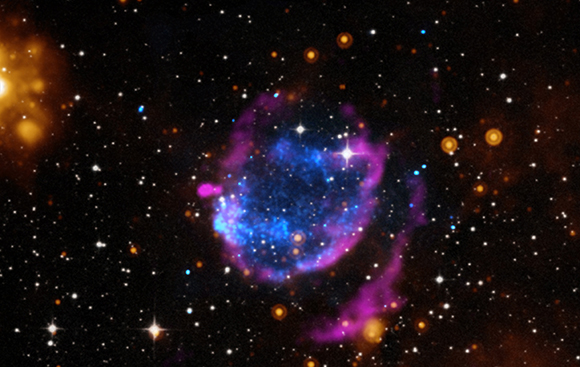
Supernovas are the spectacular ends to the lives of many massive stars. They are explosions that produce enormous amounts of energy and can shine as bright as an entire galaxy made up of billions of stars!
These events are very important because the remains of the shattered star are hurled into space. This material goes on to form new stars, planets and moons - in fact, both you and I are made of supernova material!
As these fields of leftover star material (called supernova remnants) expand, they sweep up all the material they encounter and carry it along with them.
This space photograph shows a 2200-year-old supernova remnant that is sweeping up a remarkable amount of material - enough to make 45 Suns! The blue material in the picture shows the supernova remnant, the space dust is shown in pink.
The impressive amount of material swept up by this remnant may be the first clue that something special happened to this star before it exploded.
Another clue is the temperature of the material, which is unusually hot and still emitting (sending out) high-energy X-rays. With 2200 years having passed since the supernova explosion, the remaining material has normally cooled much more.
Unfortunately, you'll have to watch this space to find out the cause for these oddities, as scientists are still trying to figure it out themselves!
Cool fact: The last supernova observed in the Milky Way was Kepler's Star back in 1604 (known as SN 1604).
Watch the video podcast
Do you want to learn more about this topic?
Visit the Chandra field guide or send us your questions in an email: cxcpub@cfa.harvard.edu
In cooperation with Space Scoop: Bringing news from across the Universe to children all around the world. Universe Awareness and the Chandra X-ray Observatory
| Children & Online Privacy |



